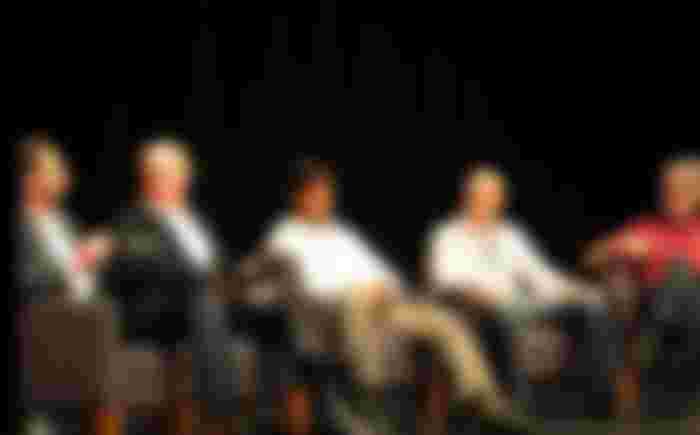If you’ve seen the movie 21, you were likely amazed by the skills the characters display as they develop card counting skills and use them in the city of Las Vegas to win thousands of dollars. What you may not know however, is that the MIT Blackjack team was real, and they did indeed use card counting to make thousands of dollars at casinos all over the world.
How It Started
Surprisingly, the group was first formed in 1979 by six students who lived in the Burton-Conner house at MIT. They taught themselves how to count cards, went to Atlantic City for spring break, and were so successful that they then decided to offer a blackjack course to teach others at their school the same tricks. A professional blackjack player, named Dave, saw the posting for the blackjack course and contacted one of the students (J.P. Masser). Dave put up most of his own capital (about $5,000) and the group flew to Atlantic City again in December. As 1979 turned to 1980, they recruited new players for their team and continued to play intermittently. Although they functioned similar to a team, at this point they didn’t consider themselves much of a team but rather just card counters who shared and split capital.
The Ramp Up
In May 1980, J.P Masser met Bill Kaplan at a Chinese restaurant after one overheard the other discussing professional blackjack. Bill Kaplan was a recent graduate of Harvard and had spent most of his college years running a blackjack team in Las Vegas. Unfortunately, most of his players were now recognized by the casinos and he could no longer send them to play there. J.P Masser heard all this, and suggested Kaplan come along with some of J.P Masser's team to Atlantic City to see how they played. Kaplan, who had nothing to lose, agreed.

After watching the students play, Kaplan noted a number of ways their play could be changed to be more efficient. He explained these to Masser and said he would like to form a more official team which would require players to follow a strict method of play and try out for a spot on the team. A couple of the original students were opposed to this idea, but when Kaplan pulled out the $89,000 he planned to invest in them, a few of them went along. The final team that was formed included ten players, including Kaplan and Masser.
In the first ten weeks of being a team, they managed to double their original stake. Most of the players averaged making $162.50 per hour at the tables with Kaplan’s new card counting method. The players kept $80 per hour of these winnings, and the rest went back to Kaplan and the people who had been investors in the original $89,000 stake. The estimated returns these investors received was 250% annually.
The Team Expands
The students experienced such widespread success, they began recruiting from colleges all over the country instead of just MIT. They mostly spread the word via flyer for a blackjack class, or old-fashioned word of mouth in order to keep things quiet. All potential members were trained for free, but tested before they were allowed to hit the tables themselves. The test generally involved playing through 8 six-deck shoes, and they had to have almost perfect results. Besides just card counting, the members were also trained in shuffle and ace tracking techniques. At their highest point in 1984, the blackjack team had 35 players and reportedly had over $350,000 in working capital.
Towards the end of 1984, Kaplan was recognized so often in casinos, that he would be tracked from the moment he walked in as an effort by casino staff to find and kick out his team members. As a consequence, he decided to step down, and effectively retire, leaving Masser in charge of the team.
The 1990s
In 1992, under the advice of Kaplan (who was still watching the team, but from afar), Masser, and another player John Chang decided to implement a new method of card counting based on Edward Thorp’s high low system. This technique required three players, two who sat at the table and a third player who was the spotter. It was wildly successful and led to a number of big wins for the team.
During this decade the team grew from 35 to nearly 80 players from 7 different states. They spent their time gambling in Native American casinos across the country as well as in Las Vegas, Atlantic City, Canada, and numerous island casinos. The team was so successful, that it didn’t take long for casinos to start catching on and begin barring the players from returning. Of course, this didn’t throw the team off too much, as they just continued to bring in new players from the college campuses to replace those who were banned. Eventually, a number of the casinos hired private investigators to look into the issue, and they quickly found that most of the students lived around MIT. This led them to obtaining an MIT yearbook and adding almost all of the images to their databases. This made it almost impossible for the team to continue, and they paid out all their stakers in 1993 and formally disbanded the team.

Although the original MIT blackjack team was done, play continued under a number of smaller teams which formed after the breakup of the official team. They never fully achieved their former glory however, and by 2000, these smaller teams had broken up as well and the reign of the MIT blackjack players was officially over.
Why Didn’t The Success Last?
When the MIT blackjack team was formed in the late 70’s, most of the casinos at the time didn’t have high tech ways of tracking players. Of course, people like Kaplan, could be recognized and banned, but it was difficult for the casinos to keep track of everyone, especially a large team of students. As the world changed, security cameras became better quality, and the internet became a thing, this made it easier for the casinos not only to spot the players, but also spot the techniques they were using to win. Especially the Thorp method which involved signaling other players when it was time to bet big for a win. Another issue the team ran into, is, as it grew, and the number of people who knew about it also grew, and there became more ideas and techniques involved and like many things, it became too difficult to control. After the split in 1994, the teams also lost the direction of Masser and Kaplan, who had long been the voice of reason for the team as professional blackjack players. And even though the two smaller teams which resulted were mildly successful, well, even the best heists can’t last.
This article was brought to you by the MintDice Bitcoin Casino - play to win today. Originally posted on the MintDice Blog.


Do you see physical casinos possibly implementing facial recognition to track blackjack players?